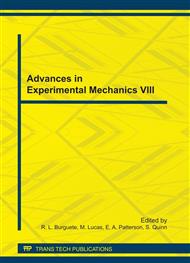p.273
p.279
p.285
p.291
p.297
p.303
p.309
p.315
p.321
The Validation of Weld Residual Stresses for Use in Structural Integrity Assessment
Abstract:
The continued safe and reliable operation of plant invariably has to consider the assessment of defects in welded structural components. This requires some estimate of the residual stresses that have developed during the welding fabrication process. For as-welded structures these stresses can be of yield magnitude. Engineering critical assessment procedures such as R6, BS 7910, FITNET and API 579-1 provide simplified estimates, bounding profiles or advice on detailed analysis or measurement which can be applied to provide conservative estimates of the remaining life of plant. The use of finite element analysis (FEA) is being applied more frequently to predict residual stresses in welded components for assessment purposes. This calculation involves complex non-linear analyses with many assumptions. As a consequence, the accuracy and reliability of solutions is variable. In order to improve the consistency of weld modelling, and hence the accuracy and confidence in their use, a set of Guidelines covering the calculation of residual stresses have been developed. The residual stress calculations need to be validated before the results can be used in assessments and guidance on how to demonstrate the required standard of validation proof is provided with these Guidelines. The level of validation required, depends on the problem being solved and the sensitivity of the assessment to the presence of residual stress. For example a high level of validation may be required for assessments of safety critical plant. To support these calculations, measurements are required and a series of ‘Weld Residual Stress Benchmarks’, describing welded mock-ups which have been measured using various measurement techniques, are being collated which the users can then refer to when validating their finite element modelling techniques and thus provide a greater confidence in the predicted results.
Info:
Periodical:
Pages:
297-302
Citation:
Online since:
August 2011
Authors:
Keywords:
Price:
Сopyright:
© 2011 Trans Tech Publications Ltd. All Rights Reserved
Share:
Citation:


